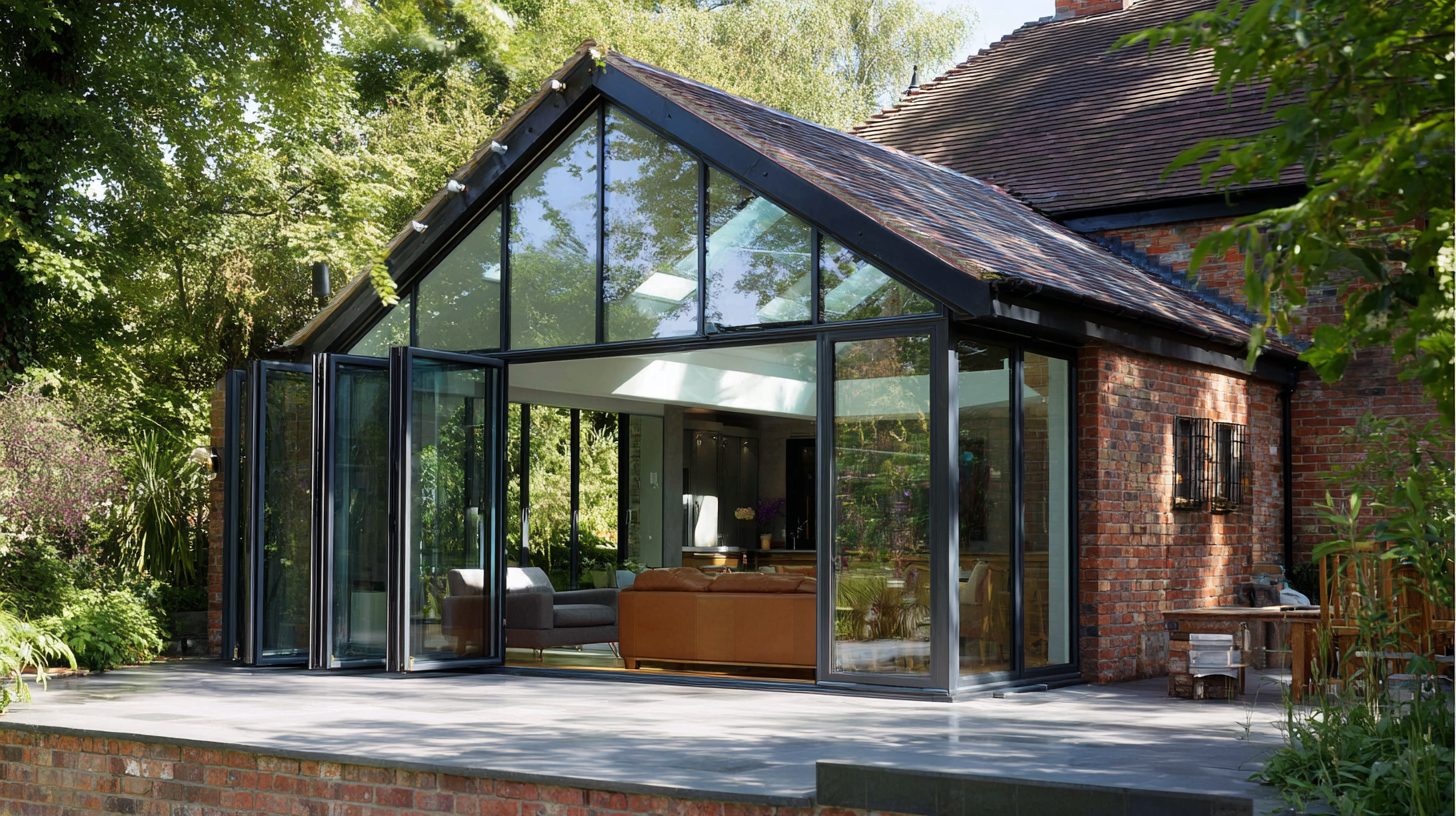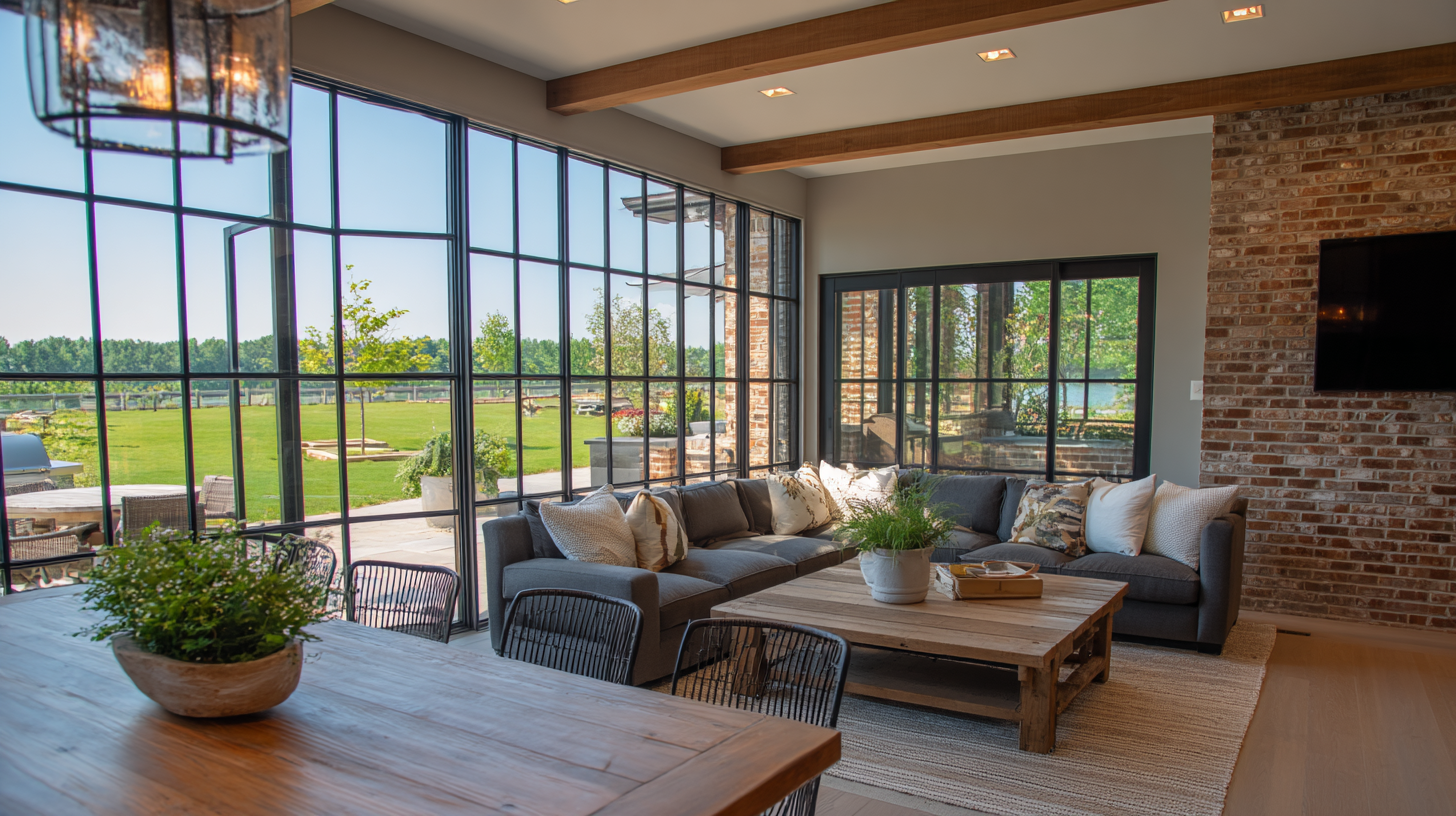 Bifold windows have rapidly gained popularity in both residential and commercial spaces, thanks to their unique ability to blend indoor and outdoor environments while maximizing natural light. According to a recent report by the National Association of Home Builders, installations of bifold windows have increased by over 30% in the past five years, highlighting a significant trend toward stylish yet functional design solutions. These versatile windows not only enhance aesthetic appeal but also improve energy efficiency, with studies indicating that homes equipped with bifold windows can achieve up to a 15% reduction in energy consumption compared to traditional window designs. As homeowners and builders alike seek innovative solutions to accommodate modern living, understanding the benefits of bifold windows becomes essential for making informed installation choices that elevate both comfort and value.
Bifold windows have rapidly gained popularity in both residential and commercial spaces, thanks to their unique ability to blend indoor and outdoor environments while maximizing natural light. According to a recent report by the National Association of Home Builders, installations of bifold windows have increased by over 30% in the past five years, highlighting a significant trend toward stylish yet functional design solutions. These versatile windows not only enhance aesthetic appeal but also improve energy efficiency, with studies indicating that homes equipped with bifold windows can achieve up to a 15% reduction in energy consumption compared to traditional window designs. As homeowners and builders alike seek innovative solutions to accommodate modern living, understanding the benefits of bifold windows becomes essential for making informed installation choices that elevate both comfort and value.
Bifold windows are an innovative addition that can completely transform your living space, offering both style and functionality. They dissolve the barrier between indoor and outdoor environments, allowing natural light to flood into your home while providing breathtaking views. When considering bifold windows, it's essential to select a design that complements your aesthetic and spatial needs, ensuring a seamless integration with your existing decor.
One key tip for installing bifold windows is to carefully assess the framing requirements. Proper measurements are crucial not only for the aesthetic placement but also to ensure energy efficiency and optimal performance. Consider working with a professional installer who can provide insights on the best materials and configurations to suit your home. Additionally, don’t overlook the importance of weatherproofing; investing in high-quality seals can prevent drafts and water intrusion, enhancing durability.
When it comes to maintenance, regular cleaning and inspections can prolong the life of your bifold windows. Use mild detergents and soft cloths to avoid scratching the glass, and check the tracks for debris that could hinder functionality. Incorporating a simple routine will keep your windows looking pristine and operating smoothly, allowing you to fully enjoy the seamless connection between your indoor and outdoor spaces.
The global construction market is witnessing a significant shift with the rising demand for bifold windows, showcasing their economic impact. As highlighted by industry trends, the windows and doors market is projected to reach approximately USD 494 billion by 2036, reflecting a robust growth rate fueled by architectural innovation and consumer preferences for versatile design options. This surge not only underscores the architectural evolution but also emphasizes the financial resilience of the construction sector.
Origin Global's expansion into the US market is a testament to the growing value of bifold windows and their influence on the industry. Supported by financial aid and pragmatic guidance, Origin Global exemplifies how family businesses can capitalize on international opportunities while contributing to economic growth in the construction landscape. The anticipated growth in the doors market, projected to hit USD 118.2 billion by 2025, further aligns with this trend, as consumers increasingly favor products that enhance both functionality and aesthetics in their homes. With such positive indicators, the future of bifold windows appears not only promising but vital to the evolving dynamics of global construction markets.
The bifold window installation market is witnessing a dynamic transformation fueled by emerging trends and evolving consumer preferences. As homeowners and businesses increasingly prioritize natural light and open spaces, the demand for bifold windows in residential and commercial settings is on the rise. By 2028, the global aluminum door and window market, which includes bifold options, is projected to experience robust growth with significant advancements in design and functionality. This trend is driven by enhanced architectural aesthetics and the practical need for seamless indoor-outdoor transitions.
Moreover, the hurricane impact window market exemplifies a key opportunity in the bifold segment. Expected to expand from USD 2.5 billion in 2024 to USD 4.8 billion by 2033, growing at a CAGR that highlights the crucial need for residential safety solutions, these innovative bifold designs are integral to modern building standards in hurricane-prone areas. Industry insights suggest that the demand for specialty fenestration products, particularly those offering improved security and performance, will shape the future of bifold windows. As such, this sector is not only adapting to aesthetic trends but also responding to heightened consumer awareness around safety and energy efficiency.
When it comes to bifold windows installation, quality assurance plays a pivotal role in ensuring longevity and performance. Standards and certifications are critical indicators of a product's reliability. For instance, bifold windows often comply with standards set forth by organizations such as the American Architectural Manufacturers Association (AAMA) and the National Fenestration Rating Council (NFRC). These bodies provide rigorous testing protocols that gauge thermal performance, air leakage, and structural integrity, allowing consumers to make informed decisions based on factual data. According to reports, bifold windows can enhance a home's energy efficiency by up to 30%, significantly impacting utility costs and environmental footprint.

In addition to structural and thermal performance, the aesthetic appeal of bifold windows cannot be overlooked. They not only maximize natural light but also create a seamless transition between indoor and outdoor spaces, much like patio doors that provide easy access to various areas of a home. A recent market analysis indicates that homes with more comprehensive outdoor access options, including bifold windows and patio doors, tend to sell for 10-15% more than comparable properties without these features. Thus, ensuring the installation of certified bifold windows not only enhances quality of life but also elevates property value, making this an investment worth considering for homeowners looking to upgrade their living spaces.
Bifold windows have emerged as a popular choice for homeowners and architects alike, particularly for their contribution to energy efficiency in sustainable design. According to the U.S. Department of Energy, windows account for up to 30% of a home's heating and cooling energy use. By integrating bifold windows, homeowners can significantly reduce this consumption. These windows facilitate natural ventilation and maximize daylight penetration, helping to lower reliance on artificial lighting and HVAC systems. Studies show that homes with ample natural light can reduce energy costs by up to 20% annually.

Furthermore, bifold windows often feature advanced glazing options that enhance thermal performance. A report from the National Renewable Energy Laboratory indicates that low-emissivity (Low-E) coatings can improve energy savings by up to 30%, making bifold windows not only aesthetically pleasing but also highly functional. The operable design promotes seamless indoor-outdoor transitions, encouraging the use of outdoor spaces and reducing the need for indoor lighting. As we continue to prioritize sustainability in design, bifold windows will play an increasingly vital role in creating energy-efficient homes that align with eco-conscious standards.